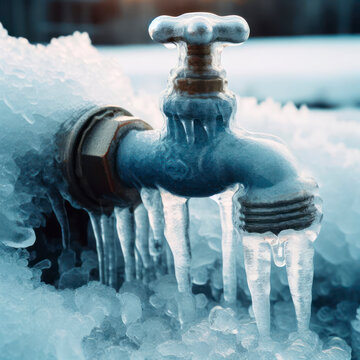Critical Approaches for Preventing Frozen Plumbing in Winter
Critical Approaches for Preventing Frozen Plumbing in Winter
Blog Article
They are making several great points on the subject of Preventing and dealing with frozen pipes in general in this great article below.

Winter can wreak havoc on your pipes, particularly by freezing pipes. Below's how to stop it from happening and what to do if it does.
Introduction
As temperatures decrease, the danger of frozen pipes rises, possibly bring about pricey fixings and water damages. Comprehending just how to stop frozen pipes is crucial for homeowners in cool environments.
Prevention Tips
Insulating at risk pipes
Wrap pipelines in insulation sleeves or utilize warmth tape to shield them from freezing temperatures. Concentrate on pipes in unheated or exterior locations of the home.
Home heating techniques
Maintain interior rooms adequately warmed, specifically areas with pipes. Open closet doors to enable cozy air to distribute around pipelines under sinks.
How to recognize icy pipelines
Search for reduced water circulation from taps, uncommon smells or sounds from pipelines, and noticeable frost on revealed pipes.
Long-Term Solutions
Structural modifications
Take into consideration rerouting pipelines far from outside walls or unheated areas. Add added insulation to attic rooms, basements, and crawl spaces.
Upgrading insulation
Invest in top notch insulation for pipes, attics, and wall surfaces. Correct insulation assists preserve consistent temperature levels and minimizes the risk of icy pipes.
Safeguarding Exterior Pipes
Garden tubes and outside faucets
Separate and drain pipes garden hoses prior to wintertime. Set up frost-proof faucets or cover outside taps with protected caps.
Comprehending Frozen Pipelines
What creates pipes to freeze?
Pipelines ice up when exposed to temperature levels below 32 ° F (0 ° C) for expanded periods. As water inside the pipelines ices up, it increases, putting pressure on the pipe walls and possibly creating them to burst.
Risks and damages
Frozen pipes can lead to water supply interruptions, residential property damage, and expensive repairs. Burst pipelines can flood homes and create extensive architectural damages.
Indicators of Frozen Pipeline
Recognizing frozen pipes early can avoid them from breaking.
What to Do If Your Pipelines Freeze
Immediate actions to take
If you think frozen pipes, keep taps open up to alleviate pressure as the ice melts. Utilize a hairdryer or towels soaked in hot water to thaw pipes slowly.
Final thought
Stopping frozen pipes requires proactive steps and quick reactions. By comprehending the reasons, indicators, and safety nets, home owners can secure their pipes throughout cold weather.
5 Ways to Prevent Frozen Pipes
Drain Outdoor Faucets and Disconnect Hoses
First, close the shut-off valve that controls the flow of water in the pipe to your outdoor faucet. Then, head outside to disconnect and drain your hose and open the outdoor faucet to allow the water to completely drain out of the line. Turn off the faucet when done. Finally, head back to the shut-off valve and drain the remaining water inside the pipe into a bucket or container. Additionally, if you have a home irrigation system, you should consider hiring an expert to clear the system of water each year.
Insulate Pipes
One of the best and most cost-effective methods for preventing frozen water pipes is to wrap your pipes with insulation. This is especially important for areas in your home that aren’t exposed to heat, such as an attic. We suggest using foam sleeves, which can typically be found at your local hardware store.
Keep Heat Running at 65
Your pipes are located inside your walls, and the temperature there is much colder than the rest of the house. To prevent your pipes from freezing, The Insurance Information Institute suggests that you keep your home heated to at least 65 degrees, even when traveling. You may want to invest in smart devices that can keep an eye on the temperature in your home while you’re away.
Leave Water Dripping
Moving water — even a small trickle — can prevent ice from forming inside your pipes. When freezing temps are imminent, start a drip of water from all faucets that serve exposed pipes. Leaving a few faucets running will also help relieve pressure inside the pipes and help prevent a rupture if the water inside freezes.
Open Cupboard Doors
Warm your kitchen and bathroom pipes by opening cupboards and vanities. You should also leave your interior doors ajar to help warm air circulate evenly throughout your home.

I came across that page about Preventing and dealing with frozen pipes while perusing the search engines. I beg you set aside a second to promote this blog entry if you enjoyed reading it. Many thanks for taking the time to read it.
Call Today Report this page